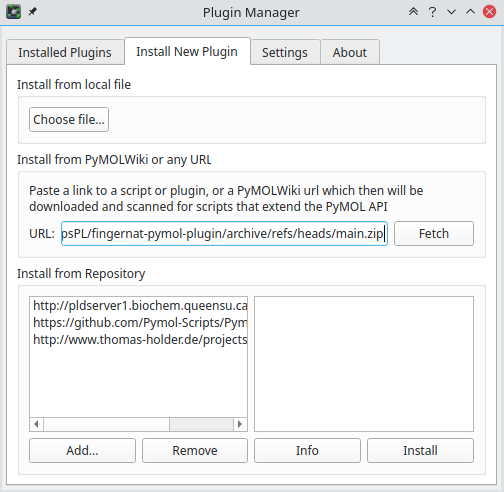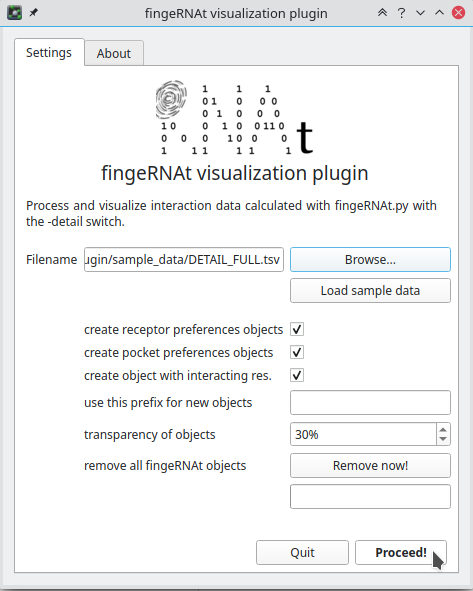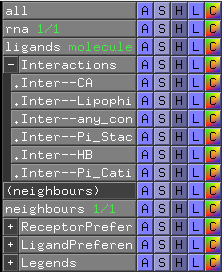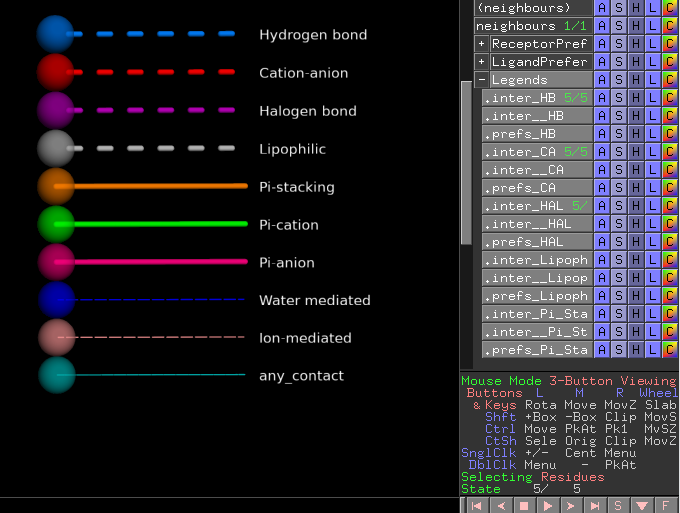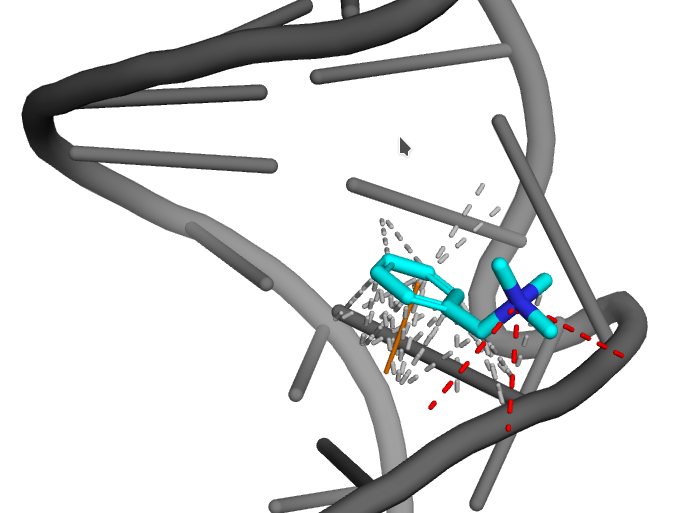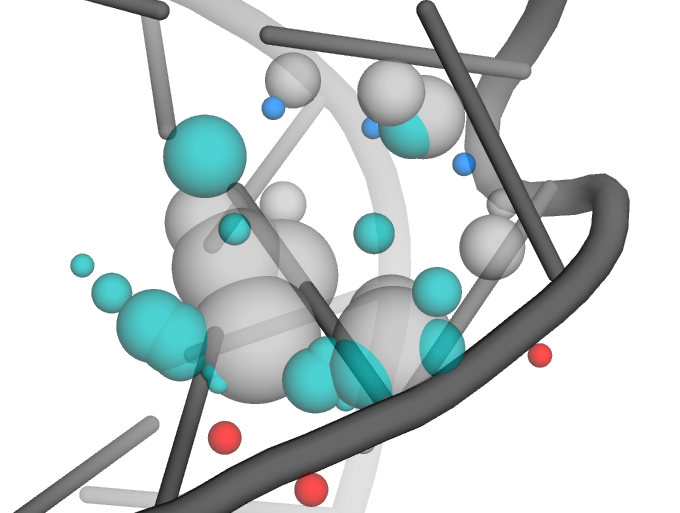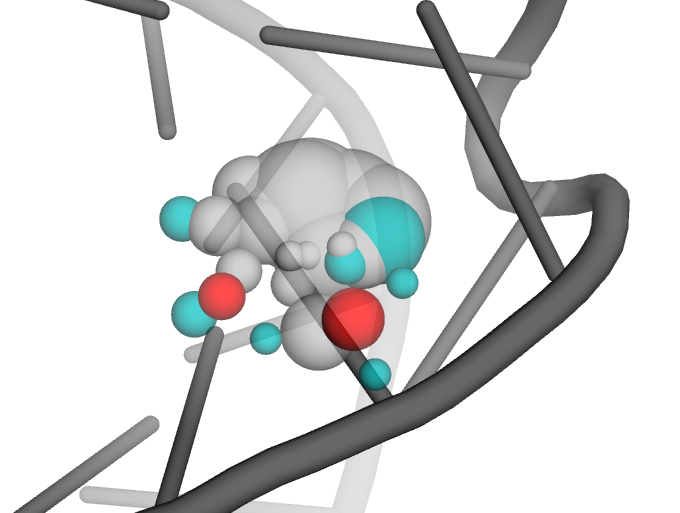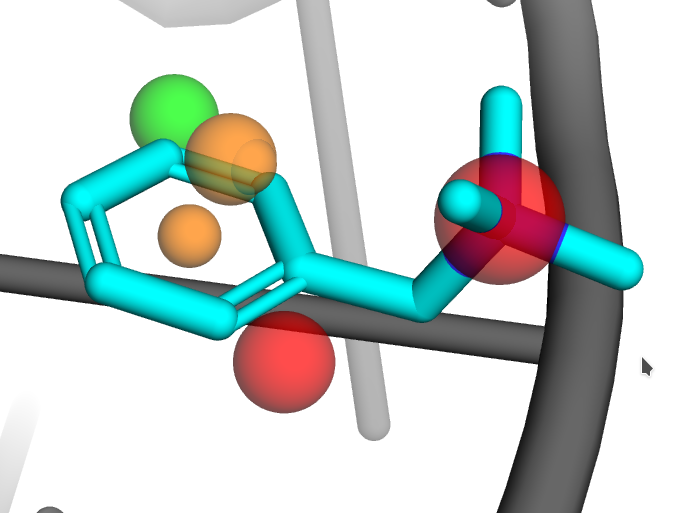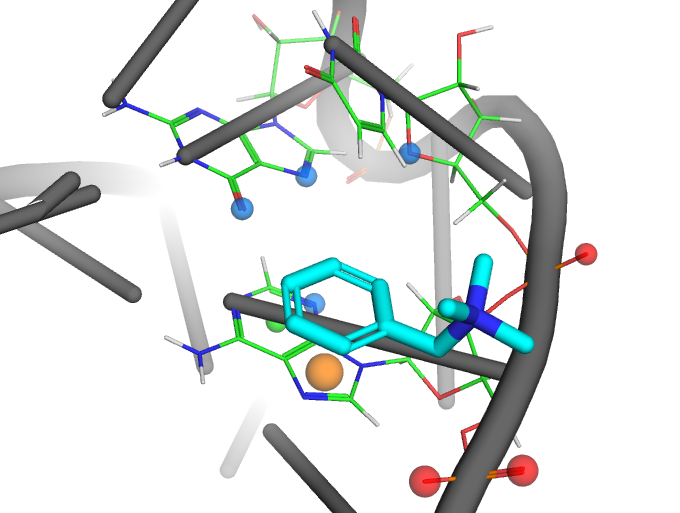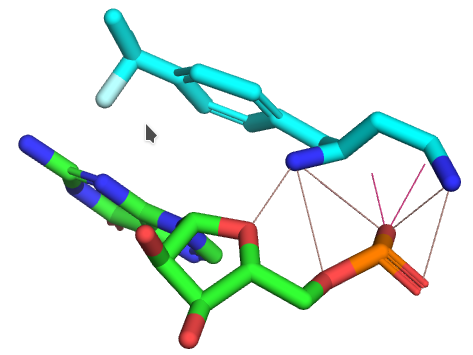This PyMOL plugin visualizes interactions detected by the fingeRNAt progam. This means that you need to run it first and generate data to be visualized in this plugin. But don't worry, it's quite simple :)
This plugin works best with PyMOL >= 2.2.3 and Python 3.
To cite: Szulc, N. A., Mackiewicz, Z., Bujnicki, J. M., & Stefaniak, F. (2022). fingeRNAt—A novel tool for high-throughput analysis of nucleic acid-ligand interactions. PLOS Computational Biology, 18(6), e1009783. https://doi.org/10.1371/journal.pcbi.1009783
The plugin works under the Python 3 and makes use of the pandas module. To install it:
# using pip
python3 -m pip install pandas
# or conda
conda install pandas
# or in debian/ubuntu using apt:
apt install python3-pandas
# or install the full conda environment of pymol and pandas, ready to install this plugin
conda create -y --name pymol-pandas -c conda-forge python">=3.5" pandas pymol-open-source- In PyMOL window go to top menu - Plugin -> Plugin manager -> Install new plugin
- In the URL field paste one of the following links:
- the latest release:
https://github.com/filipsPL/fingernat-pymol-plugin/archive/refs/tags/0-4-2-8.zip, - or the latest code archive:
https://github.com/filipsPL/fingernat-pymol-plugin/archive/refs/heads/main.zip
click Fetch, confirm the installation and the path.
- The fingeRNAt plugin is available from the Plugin menu:
This PyMOL plugin was tested in the following setups:
| PyMOL version | Linux | MacOS | Windows |
|---|---|---|---|
| 2.2.3 | ✅ | ||
| 2.3.2 | ✅ | ||
| 2.4.0 | ✅ | ✅ | |
| 2.5.0 | ✅ | ||
| 2.6.0a | ✅ |
-
Load into PyMOL nucleic acid and ligand structures you had used to detect interactions with the fingeRNAt.
-
Open the fingeRNAt plugin, click Browse and point to the DETAIL_... tsv file which was generated by fingeRNAt.
-
Click
Proceed!
- A bunch of new groups and objects are created:
- Interactions: objects holding detected interactions. The exact number depends of the detected inteactions types.
- Receptor preferences: objects showing preferences of the receptor for forming/accomodating the given type of interaction.
- Ligand preferences: objects showing preferences of the ligand binding pocket for forming/accomodating the given type of interaction.
- Neighbours: fragment of the receptor containing residues which form interactions with ligand
Each group and object can be hidden/shown separately.
- Each ligand's model (state) contains interactions detected for this particular model. The last model (state) contains the visual legend of the detected interactions:
Additionally, the color codes are printed in the console.
---------- Colors legend: -----------
Hydrogen bond (HB) is presented in marine
Cation-anion (CA) is presented in red
Halogen bond (HAL) is presented in purple
Lipophilic (Lipophilic) is presented in silver
Pi-stacking (Pi_Stacking) is presented in orange
Pi-cation (Pi_Cation) is presented in green
Pi-anion (Pi_Anion) is presented in hotpink
Water-mediated (Water-mediated) is presented in blue
Ion-mediated (Ion-mediated) is presented in salmon
any_contact (any_contact) is presented in teal
The exact number of interactions depends on the input data.
| github | contact | |
|---|---|---|
| Filip Stefaniak | @filipsPL |  |
| Natalia Szulc | @n-szulc |  |

